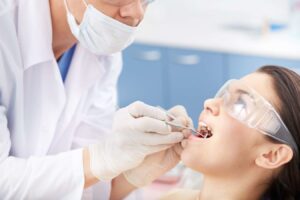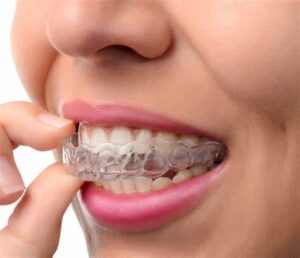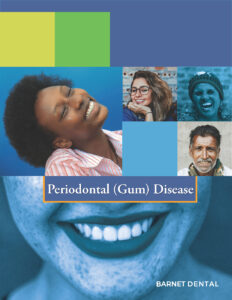Emergency Dental Care of New York
Contact
Hours
- Monday: 9:00am – 9:00pm
- Tuesday: 9:00am – 6:00pm
- Wednesday: 9:00am – 9:00pm
- Thursday: 9:00am – 9:00pm
- Friday: 9:00am – 5:00pm
Emergency Dental Care, located in the bustling city of New York, New York, is your trusted provider of urgent dental services when unexpected dental issues arise. Dedicated to providing prompt relief and comprehensive care for dental emergencies, our practice offers a wide range of immediate treatment options in a welcoming and comfortable environment. Led by a team of experienced emergency dentists, Emergency Dental Care is committed to restoring your oral health and relieving your discomfort as quickly as possible.
Urgent Dental Services
Emergency Examinations
- Immediate Assessments: Thorough evaluations to diagnose and address dental emergencies promptly.
- Pain Management: Quick relief from dental pain through effective anesthesia and pain management techniques.
Emergency Dental Treatments
- Emergency Extractions: Prompt removal of severely damaged or infected teeth causing acute pain or discomfort.
- Emergency Root Canal Therapy: Expedited root canal treatment to alleviate pain and save infected teeth.
Immediate Care
Same-Day Appointments
- Flexible Scheduling: Accommodating same-day appointments for patients in need of urgent dental care.
- Walk-In Services: Convenient walk-in availability for immediate assessment and treatment of dental emergencies.
Efficient Treatment
- Rapid Response: Prompt attention from skilled emergency dentists to address urgent dental needs without delay.
- Streamlined Procedures: Expedited processes to minimize waiting times and efficiently manage dental emergencies.
Patient Care
Compassionate Approach
- Empathetic Staff: Compassionate and understanding dental professionals dedicated to providing comfort and support during stressful situations.
- Clear Communication: Transparent communication about treatment options, costs, and expectations to empower patients to make informed decisions about their dental care.
Aftercare Support
- Post-Treatment Guidance: Detailed instructions and guidance on post-procedure care and pain management to promote optimal healing and recovery.
- Follow-Up Care: Scheduled follow-up appointments to monitor progress, address any concerns, and ensure the successful resolution of dental emergencies.
Dental Cleanings
Dental cleanings, also known as prophylaxis or teeth cleaning, are essential preventive dental procedures performed by dental hygienists or dentists to maintain optimal oral health. These cleanings remove plaque, tartar, and stains from the teeth, preventing the development of dental problems such as cavities, gum disease, and bad breath.
Here's an overview of dental cleanings and their key aspects:
- Purpose of Dental Cleanings:
- Plaque Removal: Plaque is a sticky film of bacteria that forms on the teeth and along the gumline. Regular cleanings help remove plaque, preventing it from hardening into tartar.
- Tartar Removal: Tartar, also known as calculus, is hardened plaque that cannot be removed by brushing or flossing alone. Dental instruments are used during cleanings to remove tartar buildup, reducing the risk of gum disease.
- Stain Removal: Dental cleanings can remove surface stains caused by factors such as smoking, coffee, tea, or certain foods, resulting in a brighter and more attractive smile.
- Prevention of Dental Problems: By removing plaque and tartar, dental cleanings help prevent the development of cavities, gingivitis (gum inflammation), periodontitis (gum disease), and other oral health issues.
- Procedure:
- Evaluation: Before the cleaning, the dental hygienist or dentist will perform a thorough examination of the teeth and gums to assess the overall oral health and identify any areas of concern.
- Scaling: Using specialized dental instruments, the hygienist will carefully remove plaque and tartar deposits from the tooth surfaces, including below the gumline.
- Polishing: After scaling, the teeth are polished using a rotating brush or rubber cup attachment and a mildly abrasive toothpaste. This helps remove surface stains and smooths the tooth surfaces, making it more difficult for plaque to adhere.
- Fluoride Treatment: Some dental cleanings may include the application of fluoride gel or varnish to strengthen tooth enamel and provide additional protection against cavities.
- Education: Throughout the cleaning appointment, the dental hygienist or dentist may provide oral hygiene instructions and tips for maintaining good oral health at home, including proper brushing and flossing techniques.
- Frequency of Dental Cleanings:
- The American Dental Association (ADA) recommends regular dental cleanings every six months for most individuals. However, some people may require more frequent cleanings based on their oral health needs, such as those with a history of gum disease or high risk of cavities.
- Patients should follow their dentist's or hygienist's recommendations regarding the frequency of dental cleanings to ensure optimal oral health.
- Benefits of Dental Cleanings:
- Prevention of Dental Problems: Regular cleanings help prevent the development of cavities, gum disease, and other oral health issues, saving time and money on more extensive dental treatments in the future.
- Improved Oral Hygiene: Dental cleanings complement daily brushing and flossing efforts by removing plaque and tartar buildup that cannot be eliminated with regular home care alone.
- Fresh Breath: Removing plaque and tartar buildup helps eliminate bacteria that can cause bad breath, resulting in a fresher and more pleasant breath.
In summary, dental cleanings play a crucial role in maintaining optimal oral health by removing plaque, tartar, and stains from the teeth, preventing the development of dental problems, and promoting a healthy smile. Regular cleanings, combined with good oral hygiene practices at home, are essential for achieving and maintaining a healthy mouth for life.
Invisalign
Invisalign is a popular orthodontic treatment option that uses clear, custom-made aligners to straighten teeth and correct various bite issues without the need for traditional metal braces. This innovative system offers a discreet and convenient alternative to braces, allowing patients to achieve a straighter smile with minimal disruption to their daily lives. Here's an overview of Invisalign:
- Indications:
- Invisalign is suitable for treating a wide range of orthodontic issues, including crowded teeth, gaps between teeth, overbites, underbites, crossbites, and open bites.
- It is commonly used in both teens and adults who desire a more aesthetic and comfortable alternative to traditional braces.
- Treatment Planning:
- Before beginning Invisalign treatment, the dentist or orthodontist will conduct a comprehensive examination, including dental impressions, photographs, and digital scans of the patient's teeth and bite.
- Using specialized software, the dental provider will create a customized treatment plan that outlines the step-by-step movements of the teeth and the anticipated final result.
- Aligner Fabrication:
- Based on the treatment plan, a series of clear, BPA-free plastic aligners are custom-made for the patient using advanced 3D printing technology.
- Each set of aligners is designed to gradually and precisely move the teeth into the desired position according to the treatment plan.
- Treatment Process:
- The patient wears each set of aligners for about 1-2 weeks, as prescribed by the dentist or orthodontist.
- The aligners should be worn for 20-22 hours per day, only removing them for eating, drinking (except water), brushing, and flossing.
- Approximately every 1-2 weeks, the patient switches to the next set of aligners in the series, advancing through the treatment plan as the teeth gradually move into alignment.
- Monitoring Progress:
- Throughout the Invisalign treatment process, the patient will have periodic check-up appointments with the dentist or orthodontist to monitor progress and ensure that the treatment is proceeding as planned.
- Adjustments or refinements to the treatment plan may be made as needed to achieve the desired outcome.
- Post-treatment Retention:
- Once the final set of aligners is completed and the desired tooth position is achieved, the patient may be provided with a retainer to maintain the results of the treatment.
- Retainers are typically worn at night to prevent the teeth from shifting back to their original position.
Invisalign offers several advantages over traditional braces, including:
- Aesthetic appeal: The clear aligners are virtually invisible, making them a discreet option for orthodontic treatment.
- Comfort: The smooth plastic aligners are comfortable to wear and less likely to cause irritation to the cheeks and gums compared to metal braces.
- Convenience: The removable nature of the aligners allows for easy eating, brushing, and flossing without dietary restrictions or difficulty with oral hygiene.
- Predictability: Invisalign treatment is carefully planned using advanced technology, resulting in predictable and precise tooth movements.
Overall, Invisalign is an effective and popular orthodontic treatment option for patients seeking a more discreet, comfortable, and convenient way to achieve a straighter smile. If you are considering Invisalign treatment, it's important to consult with a qualified dentist or orthodontist to determine if it is the right option for your individual needs and orthodontic concerns.





